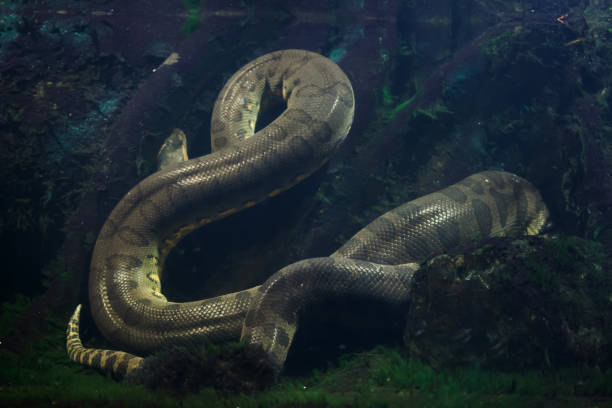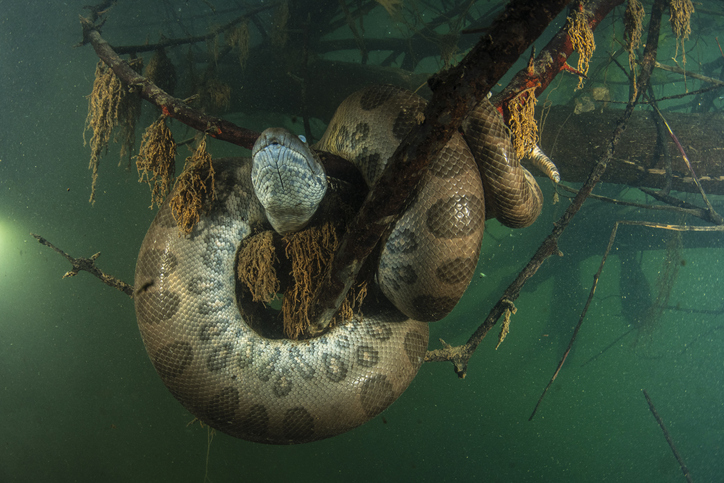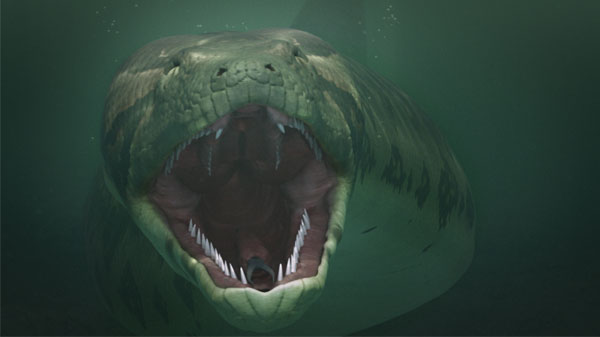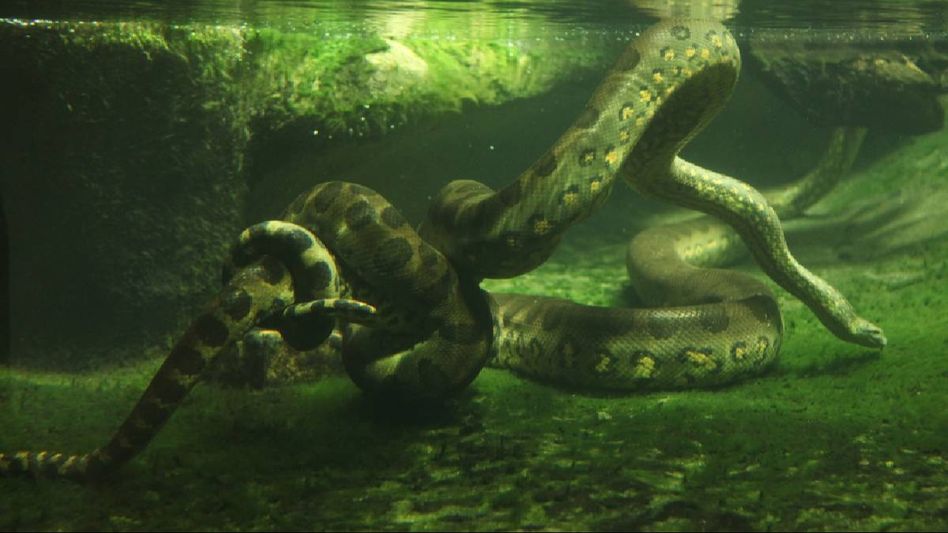
A Green Anaconda supports itself on a sunken tree branch in the Rio Formoso, in Mato Grosso do Sul, Brazil.
In an exciting and groundbreaking discovery, scientists have confirmed that the world’s largest and heaviest snake—the green anaconda—is not just one species as previously believed. A recent 2024 study published in MDPI Diversity has revealed the presence of two genetically distinct species of green anaconda living in South America, a revelation that reshapes our understanding of this iconic reptile.
The research not only sheds light on the hidden biodiversity of the Amazon rainforest but also underscores the importance of genetic studies in the conservation of wildlife. This discovery comes after nearly two decades of dedicated fieldwork, genetic analysis, and collaboration across multiple countries and institutions.
A Tale of Two Titans: Southern vs. Northern Green Anacondas

The green anaconda (Eunectes murinus), long recognized as the largest snake species by weight, has been the subject of fascination and fear in equal measure. But according to the new study led by Jesús Rivas, a biology professor at New Mexico Highlands University, the snake long believed to be a single species is actually two separate species that diverged millions of years ago.
The newly identified species is named Eunectes akayima, commonly referred to as the northern green anaconda, while the original name Eunectes murinus now refers specifically to the southern green anaconda. The term “akayima” is derived from a Cariban language, acknowledging Indigenous linguistic roots associated with the Amazon region.
Despite their nearly identical appearance, the two species are genetically different by 5.5%—a remarkably high divergence. For comparison, humans and chimpanzees differ by only about 2%, which highlights how significant this genetic gap is between the two snakes.

“We faced all the difficulties you may want – this is a secretive animal. Even though it is big, it is hard to find and hard to see when it is in front of you,” said Rivas, who spent 17 years conducting the field research.
Studying the World’s Largest Snake Was No Easy Task

Though the green anaconda is known for its immense size, studying it in the wild is a formidable challenge. These snakes inhabit remote, swampy, and flooded regions of the Amazon and the Pantanal, making them difficult to track, capture, and study.
The research team had to physically catch the snakes in their natural aquatic environments, where the anacondas have the advantage. Once samples were collected, they faced the logistical hurdles of transporting them across borders, dealing with permits, and undergoing detailed molecular sequencing and analysis.
This extensive effort involved the collaboration of biologists, conservationists, and even celebrities—Will Smith participated in one of the expeditions as part of his upcoming National Geographic and Disney+ series “Pole to Pole.”
A Scientific Breakthrough with Global Implications

The discovery of two species within what was once thought to be a single iconic species carries significant implications for science and conservation. Accurate species classification is essential for developing targeted conservation strategies and assessing the biodiversity of ecosystems.
“This wasn’t just about naming new species for the sake of taxonomy. It’s about understanding the evolutionary history and ecological roles of these animals,” said Rivas.
These genetic insights help researchers identify unique evolutionary lineages that might respond differently to environmental pressures such as habitat loss, climate change, or human conflict.
Rethinking the “Yellow” Anacondas: A Second Surprise

In addition to their findings on the green anacondas, the researchers also re-evaluated the classification of three other known anaconda species: the dark-spotted anaconda (Eunectes deschauenseei), the Beni anaconda (Eunectes beniensis), and the yellow anaconda (Eunectes notaeus).
Genetic testing revealed minimal differences between the three, leading the team to conclude that they should all be grouped under Eunectes notaeus. The distinction previously based on physical traits and geography no longer held up under DNA scrutiny.
“There was no way to keep them as separate species,” explained Rivas. “We consider downgrading them to subspecies, but even that didn’t work taxonomically. It would’ve made E. notaeus paraphyletic.”
This kind of taxonomic refinement is essential in the scientific community, ensuring classifications are both accurate and evolutionarily sound.
Fast Facts About Green Anacondas

-
Size: Can grow up to 6.3 meters (20.7 feet) in length, though they are not the longest snake (that title belongs to the reticulated python).
-
Weight: The heaviest snake in the world, with some individuals weighing over 200 kg (440 lbs).
-
Habitat: Aquatic environments such as swamps, rivers, and flooded forests in South America.
-
Diet: Carnivorous, feeding on a variety of prey including birds, fish, caimans, and capybaras.
Why Does This Discovery Matter?
This discovery highlights the rich but fragile biodiversity of the Amazon and surrounding ecosystems. While the green anaconda has often been mythologized in popular culture, it is in reality a vulnerable species whose well-being is tied to the health of its aquatic habitat.
By recognizing the existence of multiple species, conservationists can better monitor population trends, study ecological needs, and advocate for region-specific protection efforts.
It also serves as a reminder that even the world’s most iconic and seemingly well-known animals can still hold secrets. In an age of rapid environmental change, understanding genetic diversity is a powerful tool in the race to preserve Earth’s natural heritage.
What Comes Next?
The findings open the door for further study, particularly regarding behavioral and ecological differences between the newly recognized anaconda species. Are their hunting strategies different? Do they prefer different microhabitats? How do they interact with local ecosystems?
These questions will be vital for shaping the next wave of conservation strategies—not just for green anacondas, but for the broader biodiversity of South America.
Final Thoughts
In the heart of the Amazon rainforest, the world’s biggest snake continues to surprise us. The discovery of two distinct green anaconda species not only rewrites the textbooks but also highlights the value of long-term field research and international collaboration.
From hidden genes to giant legends, the green anaconda reminds us that nature is complex, ancient, and full of mystery—and that we still have much to learn.


